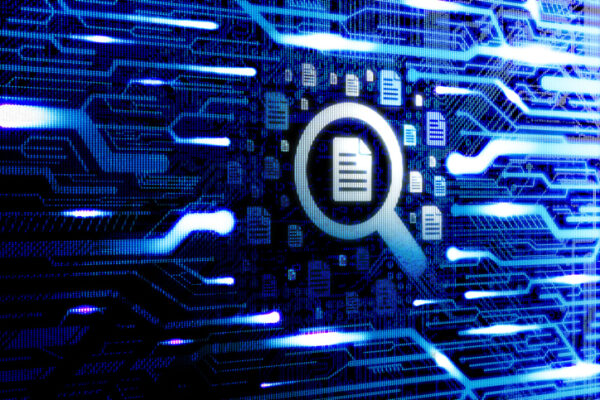
The excitement for artificial intelligence (AI) use cases in healthcare—especially those involving generative AI and ChatGPT—is palpable, with experts predicting generative AI could help unlock $1 trillion in healthcare savings. However the AI solution that holds the strongest potential to strengthen care outcomes and health equity isn’t the one healthcare leaders think of first.
Instead, right-now value could come from extractive AI. It’s a tool that gives organizations the power to put even handwritten text sent via images or PDF by digital fax into a structured data play. It’s also a practical solution for advancing data interoperability without a heavy technology lift to include healthcare’s “digital have-nots,” like post-acute care facilities and health clinics.

With the Rise of AI, What IP Disputes in Healthcare Are Likely to Emerge?
Munck Wilson Mandala Partner Greg Howison shared his perspective on some of the legal ramifications around AI, IP, connected devices and the data they generate, in response to emailed questions.
A powerful lever for improving health equity
A healthcare organization’s ability to support total care, especially for our nation’s most vulnerable patient populations, depends on access to data that enables a 360-degree view of the patient’s medical history and the factors that influence health, including social determinants of health (SDoH).
Yet according to a recent National Institutes of Health study, 80% of healthcare data is unstructured data: data that isn’t captured or stored in a standardized format, like handwritten notes sent by digital fax. When providers don’t have the ability to intelligently extract this data and make it available directly within clinicians’ workflows, they lose the power to put this data to use in strengthening care. In today’s workflow, this would require manual data entry, which slows down care and is sometimes completed by clinical staff who should be treating patients. Additionally, this increases pressure on providers by making it difficult to find the information they need, when they need it. It also dampens efforts to provide personalized, empathetic care by putting a whole-person view of the patient just out of reach.
These are challenges all healthcare organizations face, but their impact is most intensely felt in organizations that don’t own a certified EHR—like post-acute care facilities and health clinics in underserved markets, which have limited resources for sharing and receiving patient data in a timely manner.
“What we’ve seen during Covid is the need to make more data available [around health inequities] faster,” said Dr. Claudia Fegan, chief medical officer, Cook County Health, shared during a HIMSS 2023 panel named, ‘Continuing the Journey to Health Equity.’ “We have to make data-driven decisions. And until we collect that information, we can’t begin to act on it.”
Intelligent data extraction levels the playing field between digital haves and have-nots in healthcare by positioning smaller organizations to share and receive patient data in a timely manner—and in ways that enable clinicians to act quickly. Just as important, it can support these goals with no downside risk by leveraging a tool these organizations rely on most: a digital cloud fax solution.
Here’s how it works:
- Unstructured data, such as data related to physician referrals or hospital discharge, is transmitted to a facility via digital fax. Today, 7 out of 10 hospitals still rely on fax to share patient information with other providers.
- Applying natural language processing (NLP) and AI to faxed documents transforms handwritten or text data into a structure that can be easily consumed by any system. This puts actionable intelligence in the hands of providers at the point of care. The impact: more informed care decision-making and better coordination across providers.
- Providers not only gain insight into the patient’s medical history and immediate care needs, but also the SDoH factors that affect overall health and long-term outcomes, such as difficulty understanding discharge instructions, struggles to access nutritious food or transportation, or the stress that comes with living in an unsafe environment. With this information in hand, clinicians can develop a plan to mitigate these risks before a patient is discharged, reducing the potential for complications and readmission after the patient returns home.
Upleveling digital fax with NLP and AI bridges the gap between healthcare’s digital haves and have-nots by enabling organizations to receive crucial information when and where it is needed, no matter where it originates or in what form. It’s an affordable, practical solution that matters for health equity and in addressing SDoH.
Turning unstructured data into actionable intelligence
If we are to achieve AI’s full potential to improve health outcomes and health equity at reduced cost and reduced strain for the organizations that provide care, we must apply it in ways that give all healthcare stakeholders a 360-degree view of a patient in real time. By leaning into intelligent data extraction using a tool that remains heavily relied upon in healthcare—digital fax—we can ensure clinicians don’t miss valuable opportunities to make a deeper impact, one patient at a time.
Photo: Filograph, Getty Images
Bevey Miner serves as Global Health IT Strategy/Chief Marketing Officer, Consensus Cloud Solutions, Inc. With over 20 years’ experience in healthcare technology and digital health, she has been instrumental in leading strategy, product management, business development, marketing and commercialization. Bevey has been influential leading innovation in care coordination, patient engagement, population health and interoperability as well as advocating for policy change with federal and state government.














